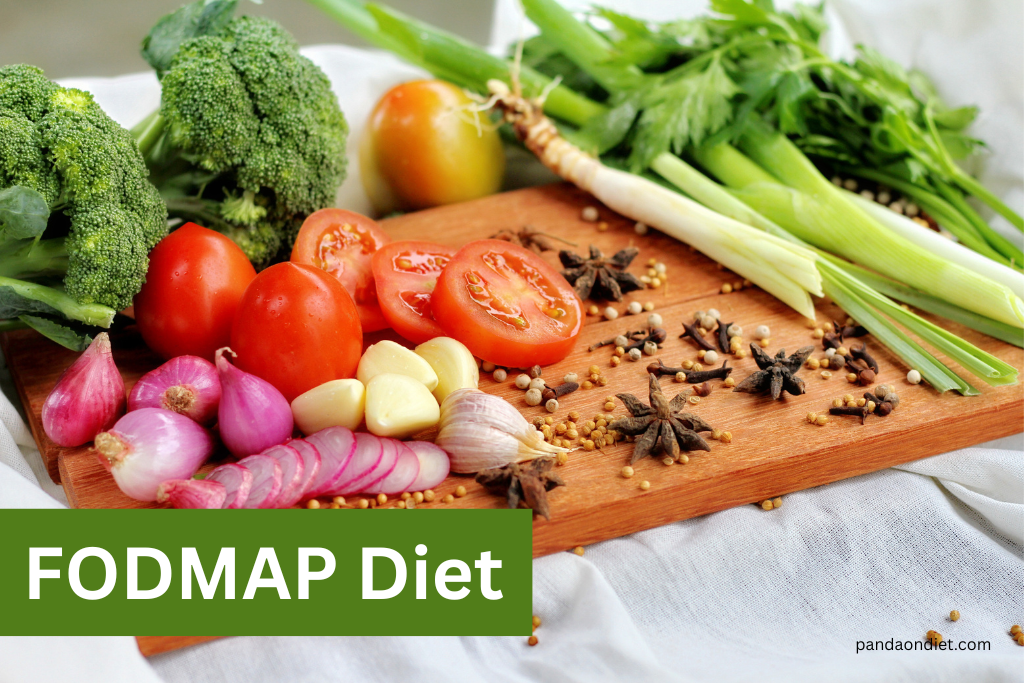Simplify Digestive Health, One Meal at a Time
The FODMAP diet is a scientifically-backed eating plan that can help individuals manage digestive symptoms effectively. Designed to reduce the intake of specific fermentable carbohydrates, this diet is commonly recommended for individuals with Irritable Bowel Syndrome (IBS) and other gut-related issues.
What Is the FODMAP Diet?
Some people find these carbohydrates difficult to digest. They ferment in the gut, causing gas, bloating, and other digestive issues.
The FODMAP diet aims to alleviate discomfort and improve gut health by limiting these foods.
The FODMAP diet focuses on reducing certain types of fermentable carbohydrates. These include:
- Fermentable Oligosaccharides: Found in wheat, garlic, and onions.
- Disaccharides: Found in dairy products like milk and yogurt.
- Monosaccharides: Found in fruits like apples and honey.
- Polyols: Found in stone fruits and artificial sweeteners.
How Does the FODMAP Diet Work?
Each phase is critical to understanding which foods your body can handle. Following the process ensures a well-rounded and sustainable approach to managing digestive health.
The FODMAP diet is divided into three main phases:
- Elimination Phase: This phase involves removing all high-FODMAP foods from your diet. It typically lasts 4-6 weeks.
- Reintroduction Phase: Gradually reintroduce one FODMAP group at a time to identify your triggers.
- Maintenance Phase: Develop a personalized diet that includes tolerated foods while avoiding triggers.
Benefits of the FODMAP Diet
The FODMAP diet is especially beneficial for those who struggle with IBS or chronic gut issues, offering a structured way to manage symptoms.
- Improved Digestive Symptoms
The diet helps reduce bloating, gas, and abdominal pain.
- Better Gut Health
Avoiding trigger foods allows the gut to heal and function optimally.
- Increased Quality of Life
Managing symptoms effectively can improve overall well-being and energy levels.
Foods to Eat and Avoid on the FODMAP Diet
Choosing the right foods is essential for the diet’s success. Low-FODMAP options provide variety while keeping symptoms under control.
High-FODMAP Foods to Avoid
- Fruits: Apples, cherries, watermelon.
- Vegetables: Onions, cauliflower, asparagus.
- Dairy: Milk, soft cheeses, ice cream.
- Legumes: Lentils, chickpeas, black beans.
- Sweeteners: Sorbitol, mannitol, high-fructose corn syrup.
Low-FODMAP Foods to Include
- Fruits: Bananas, oranges, strawberries.
- Vegetables: Spinach, zucchini, bell peppers.
- Proteins: Eggs, chicken, fish.
- Dairy Alternatives: Lactose-free milk, almond milk.
- Grains: Quinoa, rice, gluten-free bread.
Sample Meal Plan for the FODMAP Diet
This meal plan offers balanced nutrition and keeps high-FODMAP foods out of your daily intake.
| Meal | Food |
| Breakfast | Scrambled eggs with spinach and gluten-free toast |
| Snack | A handful of almonds and a banana |
| Lunch | Grilled chicken salad with olive oil and lemon dressing |
| Snack | Lactose-free yogurt with strawberries |
| Dinner | Baked salmon with zucchini and quinoa |
Tips for Success on the FODMAP Diet
Staying organized and informed makes the FODMAP diet easier to follow and more effective.
- Keep a Food Diary
Record what you eat and note any symptoms to track progress.
- Plan Meals Ahead
Meal prep ensures you have low-FODMAP options readily available.
- Consult a Dietitian
Work with a professional to tailor the diet to your needs.
- Read Food Labels
Watch out for hidden FODMAPs in processed foods.
Potential Challenges and How to Overcome Them
Challenges are common but manageable with the right strategies and a proactive mindset.
- Limited Food Choices
Solution: Experiment with new low-FODMAP recipes to keep meals exciting.
- Dining Out
Solution: Research menus in advance and communicate your dietary needs to the staff.
- High Cost of Specialty Products
Solution: Buy seasonal produce and cook meals at home to save money.
FAQs
Who should follow the FODMAP diet?
It’s ideal for individuals with IBS, small intestinal bacterial overgrowth (SIBO), or other digestive issues.
Is the FODMAP diet safe long-term?
The elimination phase is short-term, but the maintenance phase can be followed safely under professional guidance.
Can children follow the FODMAP diet?
Yes, but it’s essential to work with a pediatric dietitian to ensure proper nutrition.
Final Words
The FODMAP diet is a structured and effective way to manage digestive symptoms. By understanding the foods that trigger your discomfort, you can create a personalized eating plan that supports your health and well-being. With careful planning and guidance, the FODMAP diet can significantly improve your quality of life.

